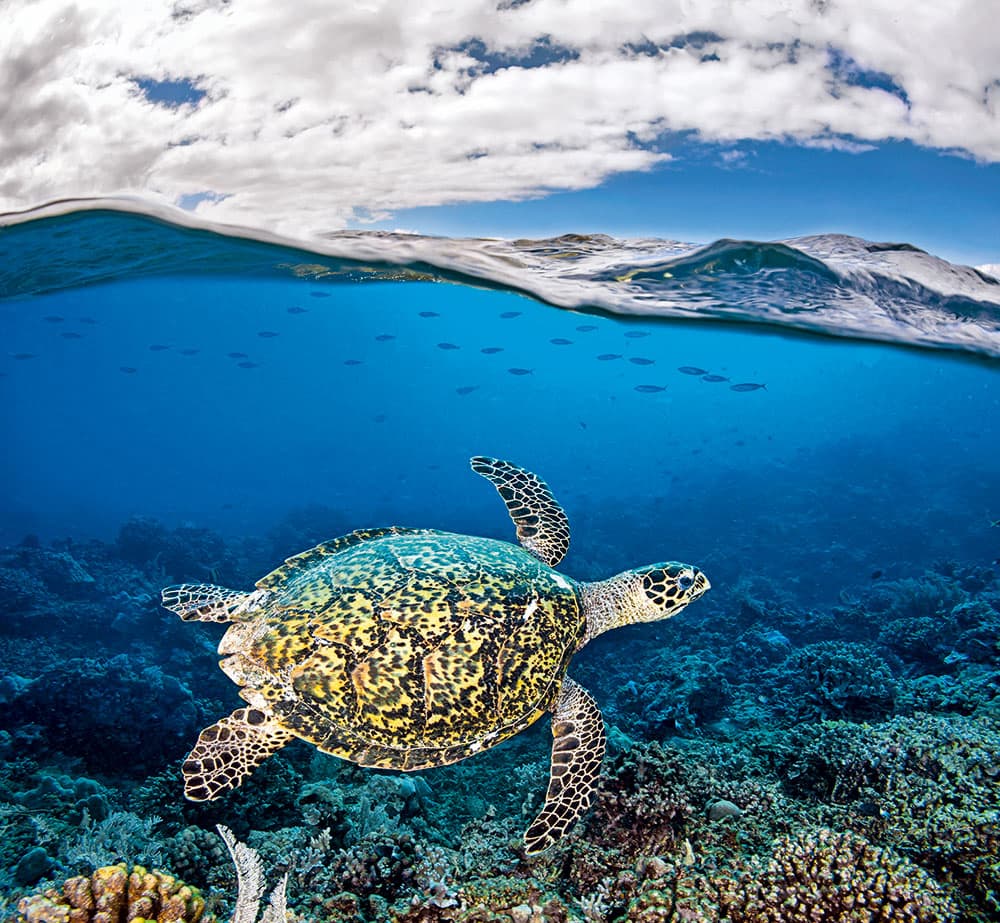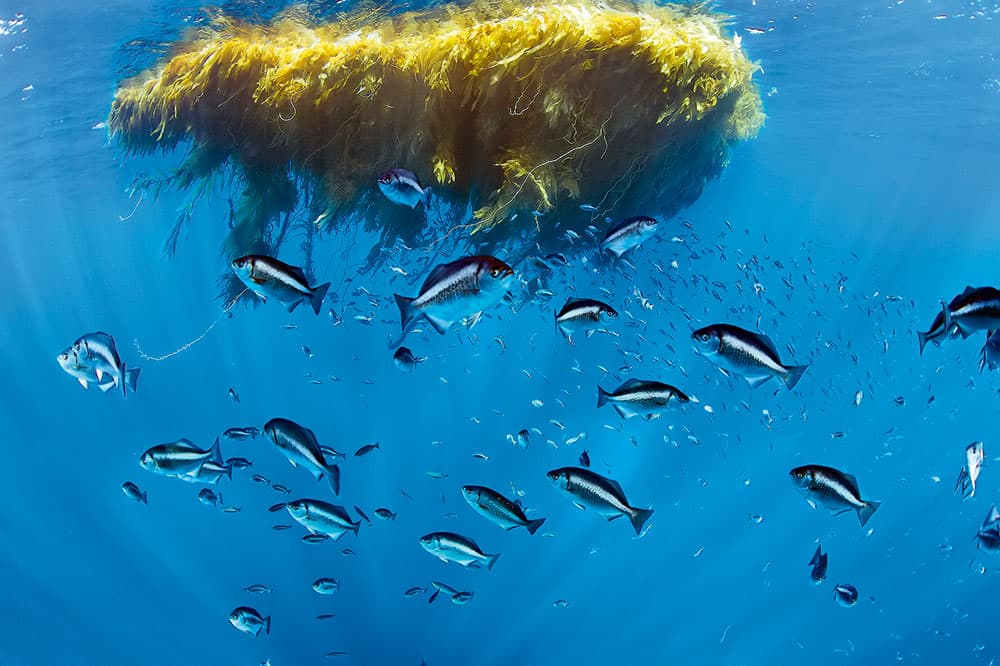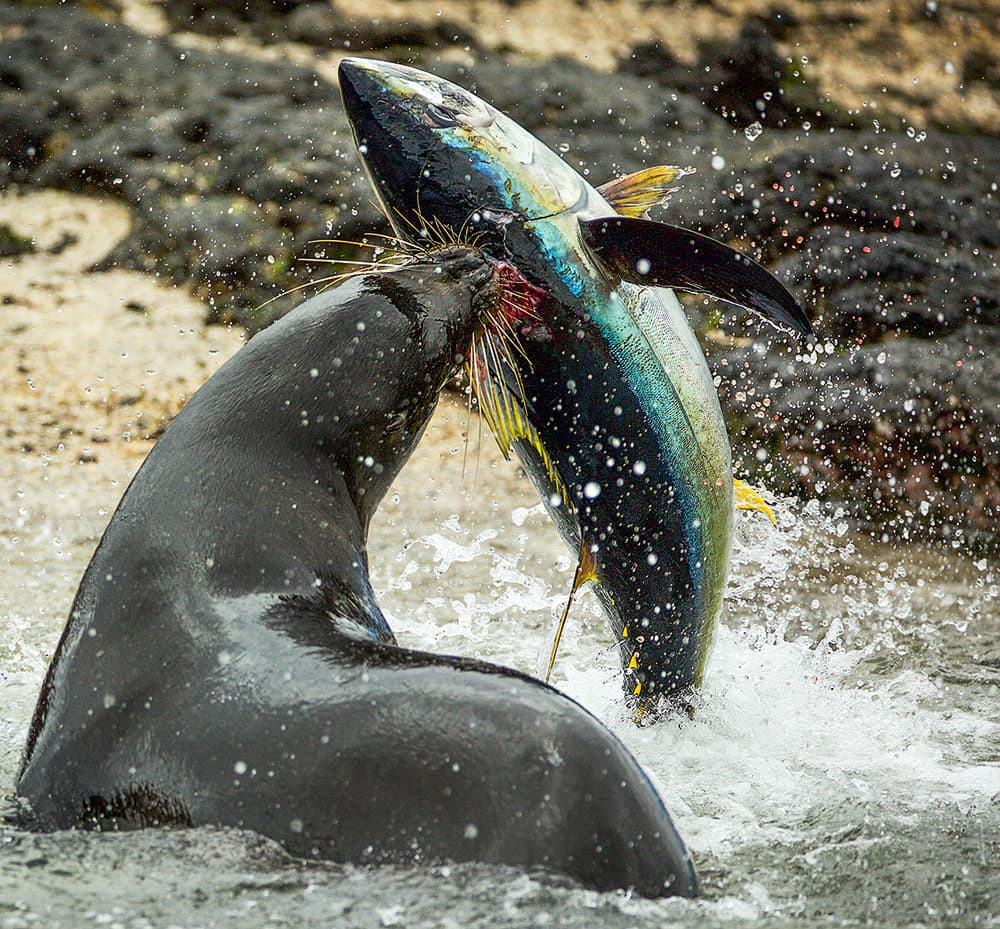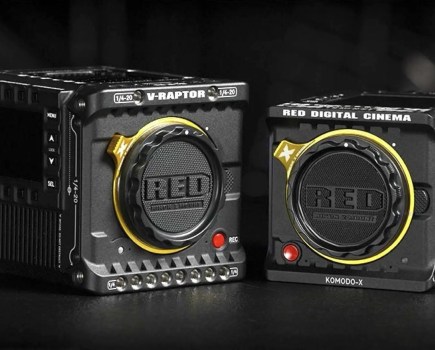
This shot from Blue Planet II shows an ‘ugly’ or ‘huddle’ of walruses gathers on a Svalbard beach in Norway. Most are males, but there are mothers with calves scattered about. Credit: Jonathan Smith
The epic Blue Planet II project took four years to complete and involved 125 shoots in 39 countries, 6,000 hours of filming underwater and an additional 1,000 hours of filming in submersibles at depths down to 1,000 metres below the surface. The result of this labour of love, documenting a part of the natural world often never seen before, is a seven-part BBC TV series and accompanying book including more than 200 still images by many of the world’s top nature photographers.
Indeed, as series narrator Sir David Attenborough points out, ‘Oceans cover 70% of the surface of our planet and yet they are still the least explored. Hidden beneath the waves there are creatures beyond our imagination.’ To almost mirror the seven-part TV series the book – which has the longer title of Blue Planet II: A New World of Hidden Depths – is split into seven chapters: One Ocean, Coast, Coral Reef, Green Seas, Big Blue, The Deep and Our Ocean. The 312-page tome features the images of dozens of highly experienced nature photographers – the likes of Christian Ziegler, Doug Perrine, Audun Rikardsen and Alex Mustard – and AP tracked down two of them, Richard Herrmann and Richard Robinson, to find out more about how they helped to shoot this mammoth project.

A split level shot of a turtle. Credit: David Fleetham/Naturepl.com
Kelp forests
As well as being a stills photographer Richard Herrmann was also a location manager/science guide for a kelp forest shoot at the Channel Islands in California, USA. He reveals, ‘The biggest challenge we faced was finding a healthy kelp forest! By October 2015 95% of southern California’s kelp forests had been turned into a decomposing mess by elevated “El Nino” ocean water temperatures. We could document kelp forests decimated by the “El Nino” effects, but in the end we needed a beautiful, healthy kelp forest with lots of life.’
After checking various parts of the Channel Islands the crew’s hopes were beginning to fade, but Herrmann knew of an isolated spot right by Santa Cruz Island. He explains, ‘With the boat and resources we had on the shoot, it was really our last chance. After two hours of motoring one day, we saw the island and just hoped for the best. What we found was a beautiful, healthy, kelp forest in tremendous visibility! We went back for 10 days straight and were able to get great images.’
For his underwater Blue Planet II shoots, Herrmann used a Canon EOS 5D Mark III DSLR, a 15mm full-frame fisheye, a 17-40mm zoom lens, Sea & Sea camera housing and Sea & Sea YS-D2 strobes. Whilst above water, or what he calls ‘topside’, he deployed a Canon EOS-1D X Mark II, a 100-400mm telezoom and a 24-105mm zoom.
Continues below…
[collection name=”small”]
The role of stills photographers on film shoots can be a tricky one as the filming aspect of the operation, understandably, takes preference. Herrmann reveals, ‘When shooting film crews while they are working, it is especially important to not get into the frame they are filming! I’ve had lots of experience with film crews, so I have a good sense of when it is OK for me to slide in for some still shots. As the cameraman is often “rolling” on a subject, I have to also be careful and shoot mostly without ashes. Any flash that is seen in a motion image will potentially kill the entire sequence.’
He adds, ‘For over-/underwater images you have to use a large dome with a wide lens and have a very calm surface to work with. Keeping water droplets off the dome is important here. Photographers use different techniques. Some use commercial products such as Rain-X; some just like to use spit!’
As for Richard Robinson, to get the best still images underwater, he simply advises, ‘Being as close as physically possible to the subject, while respecting their behaviour and remaining safe.’

Floating islands of drifting kelp are hosts to temporary ecosystems containing many types of marine creatures, especially juvenile fish. Credit: Richard Herrman
Behavioural patterns
Indeed, the ability to understand the behaviour, or likely behaviour, of the creatures you are photographing is absolutely crucial. Herrmann notes, ‘It’s so important to have been around the subjects you are photographing. You have to know where to look and how they might react on approach.’
He continues, ‘The example I could use is the Pacific white-sided dolphin. From my many years of photographing them I know what time of year and where to look for them off the southern California coast. I have also learned that when they are with their young, my chances go way down. I also know that when they are feeding, my chances are good to get close. Just by watching, and following, these animals I will see signals that tell me when I can have a good chance to get a shot.’
One of the key Blue Planet II shoots for Richard Robinson involved tracking down and photographing pods of false killer whales (which are actually dolphins) off the coast of New Zealand’s North Island and, again, having an insight to their behaviour was vital.
He says, ‘Above all else, it [understanding behaviour] is the most important thing. You only have one chance and you need to have an understanding of what is going on before getting in the water to hopefully predict what may happen and be ready for the unexpected. Throughout the day they [false killer whales] switch between being playful, resting, socialising, hunting and feeding. Knowing which mode they are in significantly increases the chance of a good interaction in the water.’

Bottlenose dolphins and false killer whales hunt together. The dolphins are two to four metres long, while the false killer whales are up to six metres long. Credit: Richard Robinson
False killer whales
Of the false killer whale shoot, which also saw the whales hunting alongside bottlenose dolphins, Robinson explains, ‘The most challenging thing was finding the whales and when we did, they would only occasionally let us have a fleeting glimpse into their world. That meant being prepared for hours, sitting on the back of a travelling boat at speed, in cold wetsuits, with heavy cameras on our knees, waiting for all the elements to come together for the one moment we could drop into the water to get the shot.’
The whale shoot spanned over several seasons and Robinson reveals, ‘My trusty Canon 5D Mark II was upgraded along the way to the 5DS R and then the 5D Mark IV. I use an Aquatica underwater housing with a couple of wideangle Canon L-series lenses, depending on the conditions of the day.’
He adds, ‘The dynamic range of cameras has improved dramatically in digital cameras over recent years. These [false killer whales] are big animals, covering a large area underwater in less than ideal conditions… making images like this impossible [to shoot] in the past. They are also very fast moving – and underwater [when shooting] through your mask, you have a limited field-of-view, so I rely heavily on the camera’s AF abilities.’
With everything ‘in the can’ and the TV series and book now out, Richard Robinson is crystal clear about the best lesson he learnt while working on the energy-sapping Blue Planet II shoots, ‘Teamwork!’ He explains further, ‘As a photojournalist I tend to work by myself, and mostly I kind of like it that way, but on Blue Planet II I got to work alongside the best producers and scientists in the business. We pushed each other to the very limit and that brought out our best qualities. It lifted my game and has definitely made me a better photographer.’

Sea lions generally swallow fish whole so, to turn the tuna into pieces of the right size, the sea lions thrash them violently to break them apart. Credit: Richard Wollacombe

The book Blue Planet II: A New World of Hidden Depths by James Honeyborne and Mark Brownlow (BBC Books, ISBN: 978-1849909679, £25) features more than 200 breathtaking photographs and text to accompany the BBC TV series. To find out more, visit www.penguin.co.uk.







